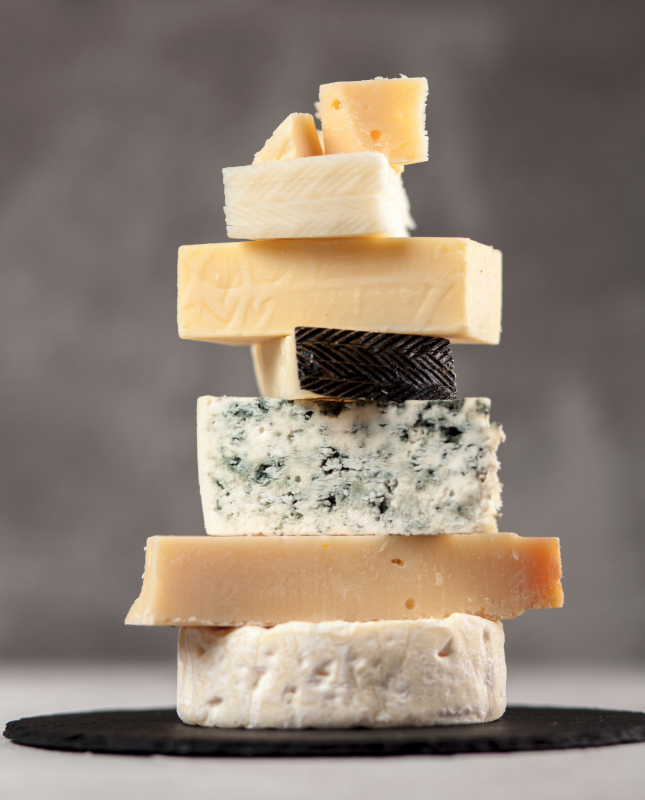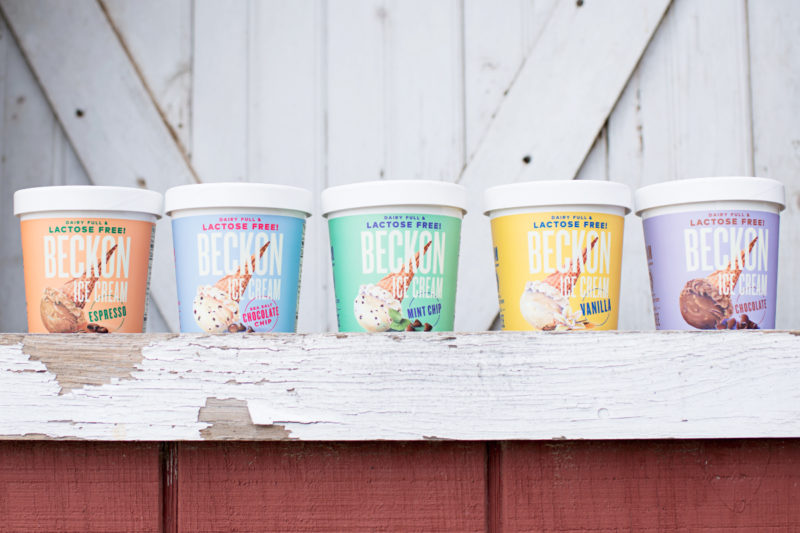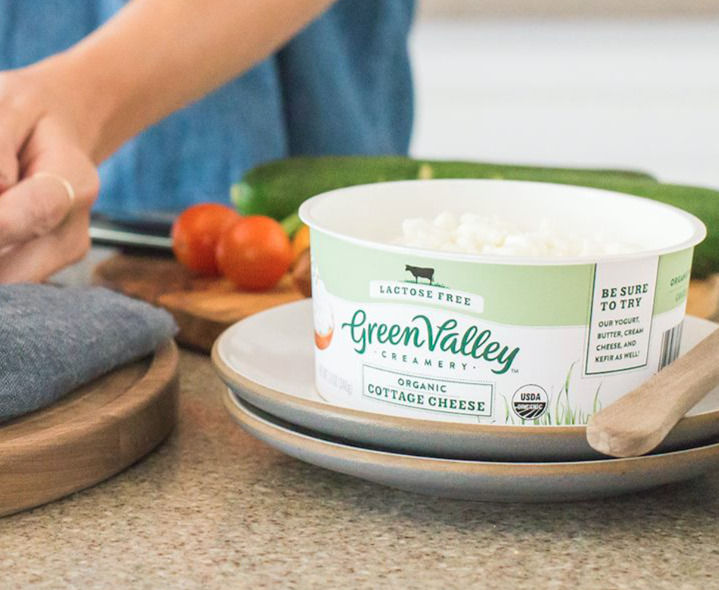CHICAGO — Found in nature, cultures and enzymes are used throughout the dairy industry. They often function as performance ingredients, doing everything from coagulating milk into curd or producing bio-protective fermentates. Other times they deliver health benefits to the consumer, such as probiotics to boost immunity.
Sometimes it’s both, as in the case of the lactase enzyme, which breaks down lactose into its constituent monosaccharides, glucose and galactose. This allows for a formulation sugar reduction at the same time it makes the product easier to digest for consumers with lactose intolerances or sensitivities.
Product developers appreciate the many functions of cultures and enzymes in today’s processing world, as they are recognized as clean label ingredients. Further, there are many product innovation opportunities with cultures and enzymes, as they are not stagnant ingredient categories. Researchers continuously are exploring nature to isolate and purify new strains of cultures and identify highly specific enzymes with unique, desirable functionalities, which suppliers may then commercialize for industrial applications.
Enzymes are proteins that act as catalysts to accelerate a desired reaction. They are specific in function and in dairy foods applications, serve as processing aids, meaning they have no technical or functional effect in the end product and are present at insignificant levels in the finished food. Often, after completing a reaction, steps are taken to deactivate the enzyme to prevent it from further reacting. This may be accomplished through heat, change in pH, high pressure, etc.
Depending upon how the enzyme is used during manufacturing, it may or may not require declaration on the ingredient statement. When declared, often the term “enzyme” may be used as an all-encompassing generic ingredient.
 Many cheeses rely on protease enzymes to hydrolyze casein proteins, which results in the protein coagulating and forming curd. Other proteases are used to break down proteins for flavor development in cheese and some fermented foods. Lipases also are used to break down lipids during cheese ripening for the development of lipolytic flavors. Suppliers often will create enzyme blends for specific applications, enabling a manufacturer to produce a signature flavor or to address a recurring product defect.
Many cheeses rely on protease enzymes to hydrolyze casein proteins, which results in the protein coagulating and forming curd. Other proteases are used to break down proteins for flavor development in cheese and some fermented foods. Lipases also are used to break down lipids during cheese ripening for the development of lipolytic flavors. Suppliers often will create enzyme blends for specific applications, enabling a manufacturer to produce a signature flavor or to address a recurring product defect.
With artificial preservatives falling out of favor, cheesemakers are increasingly on the lookout for benzoate-free enzymes. They not only guarantee that the cheese is benzoate-free, but that the whey is, too.
Royal DSM, The Netherlands, recently upgraded its proprietary enzyme for accelerated cheese ripening to now be benzoate-free. This was possible with the use of innovative production technology and changing the formulation matrices of the products to eliminate the need for benzoate-based preservation.
The company’s carboxypeptidase cheese ripening enzyme accelerates flavor formation in several different cheese varieties. It causes small peptides and amino acids in milk to release faster during the ripening process, converting them to flavor components by the added cheese cultures. This results in a faster ripening time, and a smaller environmental footprint.
“Today’s cheese manufacturers face multiple challenges,” said Evandro Oliveira de Souza, global business lead for cheese at DSM Food Specialties. “They must continually increase cheese quality, while optimizing whey value and producing their products in an efficient, sustainable way. High-quality, high-purity ingredients are key.”
Chr. Hansen Holding A/S, Denmark, is helping soft cheese producers overcome the challenges of texture degradation and high levels of bitterness in camembert and brie style cheeses with the introduction of a specialized coagulating enzyme. The coagulant provides quality throughout shelf life with a high initial protein breakdown that enables the cheeses to be on the market shortly after production.
“Soft cheese producers have some incredible traditions dating back more than a thousand years, which is something we wanted to pay tribute to when searching for the ideal coagulant,” said Marc Faiveley, application manager soft cheese. “We therefore established a research team located in France — the home of soft cheese — and went for a very collaborative approach in the development phase.”
The undesirable texture and flavor changes occur when proteins break down into peptide fractions, which may lead to an increased amount of bitterness, a runny texture or the unpleasant smell of ammonia.
“This is not only disappointing to the consumer enjoying a sandwich or cheese platter, but also a major issue for producers who have to deal with products being sold at a discounted price or being returned from the retail chain,” said Michael Fooken Jensen, global marketing manager with Chr. Hansen. “By solving the quality problem and extending shelf life, there’s less food waste.”
The enzyme currently garnering the most attention in dairy foods is lactase. When the lactose in milk is broken down by lactase into galactose and glucose, the product tastes sweeter. This is without any change in sugar or calorie content. It enables the processor to reduce the amount of added sugars and still achieve the same degree of sweetness in lactose-free dairy products. It also may allow for more attractive product labels with claims of reduced added sugars.
Not all lactases are created equal. The pH and processing temperature may impact performance, so a lactase that works well in fluid milk likely may not be the same lactase to use in the manufacture of lactose-free ice cream.
A number of dairy foods and dairy-containing products include lactase in order to make a lactose-free claim, as the products appeal to consumers who are intolerant or sensitive to lactose. Processors are discovering that by eliminating lactose, they may disincentivize consumers from switching to dairy alternatives, when the sole reason for the swap is to avoid lactose.
 Boston-based Beckon ice cream is developing products for lactose-intolerant consumers buying real dairy ice cream. The company incorporates lactase into the milk and cream prior to churning it into ice cream.
Boston-based Beckon ice cream is developing products for lactose-intolerant consumers buying real dairy ice cream. The company incorporates lactase into the milk and cream prior to churning it into ice cream.
“Beckon is here to welcome lactose-intolerant ice cream lovers back to real premium ice cream,” said Gwen Burlingame, co-founder. “We chose the name Beckon to illustrate that invitation or call to join in. Our ice cream is not an alternative; it’s the real deal. We’re extending deliciously creamy, dairy-full ice cream to an entire group of individuals who have previously had to compromise.”
Fermentation cultures are also function-specific in dairy foods manufacturing, with different cultures participating in different fermentation pathways. Processors select culture strains based on desired finished-product attributes. The cultures are living organisms, which means that unless they are killed, they will continue to participate in the specific fermentation pathway provided there is substrate available for metabolism.
Many dairy foods now include probiotic cultures, which are viable microorganisms that have little or no impact on the product. Their purpose is to biologically influence the body after consumption.
The most commonly used fermentation cultures are known as lactic acid bacteria (LAB) and often are referred to as starter cultures. The cultures ferment the lactose inherent to milk into lactic acid, a process responsible for lowering pH. It gives dairy products a characteristic sour or tart taste and coagulates proteins. There is a variety of LAB available to dairy processors, with specific strains providing distinct flavor and textural characteristics.
Because the cultures are fermenting the lactose, it means fermented dairy foods have a lower lactose content than unfermented products such as fluid milk, cream and ice cream. In fact, the LAB used in most aged cheeses renders the cheese lactose-free.
Finlandia Cheese, Parsippany, N.J., now includes a lactose-free claim on many of its imported aged cheeses. The company said the cheeses are naturally void of lactose because of the fermentation and aging process.
Cultured products such as kefir, sour cream and yogurt also contain low levels, if any, of lactose. Lifeway Foods Inc., Morton Grove, Ill., communicates to consumers that its fermentation process and specific kefir cultures ensure that Lifeway Kefir is up to 99% lactose-free and suitable for most people who are lactose intolerant.
Some processors will take the extra step and add lactase to ensure the product is completely lactose free.
 Green Valley Creamery, Sebastopol, Calif., offers an extensive line of lactose-free dairy products. Its most recent addition — organic lactose-free cottage cheese — is made with such simple ingredients as organic milk and cream, Celtic sea salt, lactase enzyme and live, active cultures.
Green Valley Creamery, Sebastopol, Calif., offers an extensive line of lactose-free dairy products. Its most recent addition — organic lactose-free cottage cheese — is made with such simple ingredients as organic milk and cream, Celtic sea salt, lactase enzyme and live, active cultures.
JoeFroyo, Upland, Calif., promotes the lactose-free quality of its ready-to-drink cold-brew drinkable yogurt line and 100% real half-and-half. The finished product is achieved through fermentation by the live and active cultures. The creamer also includes lactase.
In addition to LAB, many cheeses include adjunct cultures, which provide or enhance characteristic flavors and textures. They function by breaking down various components of milk.
Cultures that exert a bio-protective effect against yeast and mold also exist. It allows for the production of dairy products free of preservatives and stabilizers.
Chr. Hansen introduced more than 10 next-generation bioactive cultures that significantly extend the shelf life of fresh dairy foods, and thus help reduce food waste.
“It is a new generation that offers improved solutions,” said Peter Thoeysen, marketing director, dairy bio-protection. “The new cultures are applicable and optimized to significantly more products and applications — in addition to yogurt, also fresh cheese, kefir, quark and numerous other fermented milk products — and they have stronger protective properties that make them well-suited in regions where the cold chain is under pressure.
“They also offer an alternative to even more chemicals and artificial preservatives than the first generation and thus we can help more customers go natural. In the development of the next-generation cultures, we focused on selecting strains that have a minimum impact on the process and help obtain the desired flavor.”
DuPont Nutrition & Health, a business of Dow DuPont based in New Century, Kas., is differentiating the production of its cultures by now only using dairy components from artificial growth hormone-free sources. The effort is in response to consumer preference.
“As transparency becomes the norm, dairy producers can have the confidence in DuPont sourcing for all ingredients used to make cultures,” said Jeff Lambeseder, regional product manager/cultures. “Requests for rBST-free have increased, so we set our sights on all of the necessary certified dairy sources and were able to accomplish this next milestone in our cultures offerings.”




